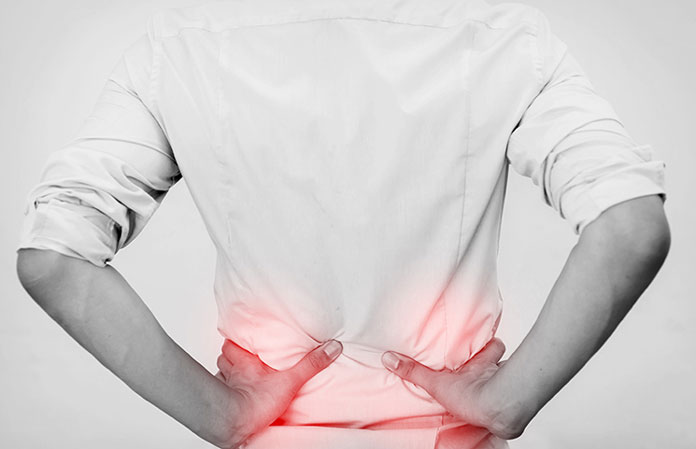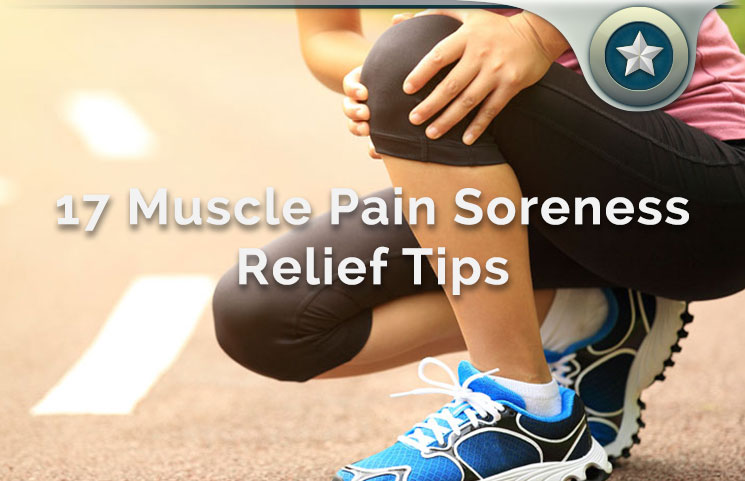Maybe you’re new to the gym or maybe you’ve gone in the past and preparing to start grinding it out again.
You know the drill, you walk into the gym in your workout gear, amino drink in hand. You start lifting, getting warmed up and like a boss you start seeing progress. Between every few sets you stop to drink a sip of water and wonder if that guy on the bench will ever finish. Finally, by the time you’ve warmed up, your training partner show us and you can finally start hitting it hard.
After your session is over, you head on to the treadmill to side-eye some of the hotties stretching and using the elliptical machines. You get done and pound down some amino acids, creatine and your protein shake. On the way home, you stop and grab a burger because you worked hard and you deserve it.
Sound Familiar?
After you get home, you do your routine for the rest of the day and head to bed. After 8 hours of sleeping like a rock, you wake up and you’re hit with it. The type of soreness that is so bad it makes it hard to function properly. And for the rest of the day, everything you do causes severe agonizing pain.
I used to get that pain, but I realize now I never had to. The soreness that hit you is known as DOMS. Or, Delayed-Onset-Muscle Soreness. If you’re a fitness buff or gym rat, chances are you’ve heard of DOMS. But it’s likely you don’t know what they are. What causes them and how do you avoid them? Keep reading and I’ll tell you the secret to avoiding DOMS.
What is Delayed-Onset Muscle Soreness? Or DOMS?
DOMS are the hard-hitting soreness, stiffness and pains that you feel after hitting the gym hard. They typically happen the next day and sometimes get even worst the second day after that.
DOMS are induced by intense exercise that causes severe muscle damage. They’re actually a good thing because your muscles need to be torn so they can repair and strengthen. Eventually the body adapts to the trauma and you get the DOMS less frequently.
The pains you experience from DOMS has a scientific name as well. Delayed Onset Muscle Soreness is also known as “Muscular Mechanical Hyperalgesia.”

How Are DOMS Treated?
Several things can be done do help with DOMS. There are steps to take before a workout, during a workout and after a workout. Most of the tips you’re about to read you likely are already doing or should be doing. But the things that are easy to do, are also easy not to do. So, these are a reminder of how to avoid injury.
17 Muscle Pain Soreness Relief Tips For Athletes:
Pre-Training Tips
Drink Plenty of Water
Hydrating yourself throughout the day is vital before training. And will help you keep your ph and electrolytes balanced and hydrated while working out.
Get Rest
Any professional athlete knows, you have to rest as much as you train or more. If you’re only going for 5-6 hours of sleep, then your body doesn’t have enough time to heal. Your body is going to let you know you haven’t rested enough. You’ll feel DOMS and your training will likely suffer greatly. Set a routine and stick to it for waking up and going to bed.
Eat Properly
The right nutrition and diet is everything. Your body needs the correct nutrients to rebuild and sustain itself. Eating junk food and fast food that is high in calories and low in nutrients causes bloating, indigestion and ultimate a loss of gains. Plus it can make you fat.
Take Amino Acids
Amino acids help avoid the breakdown of muscle tissue while working out and can be a simple way to help lessen the frequency of DOMS. They’re the building blocks of protein and are simple enough to take 30 mins prior to working out.
During Training Tips
Proper Warm Up is Everything
There is a lot of pain and soreness that comes from tendons and ligaments as well as cartilage and other soft connective tissues. By warming up properly, you’ll help these soft tissues of the body prepare for lifting and high intensity workouts. Warming up also raises body temperature and improves the elasticity of soft tissues and joints.
Moderate Your Intensity
It’s good to go full bore from time to time. But never over-train. You should never push body harder than what it is ready for. Think of progress and muscle stimulation. The last thing you want to face is an injury that can put you out of the gym for weeks or months.
Use a Cool Down Method
Cooldowns aren’t exactly proven to reduce Delayed Onset Muscle Soreness. But they’re a good component to add to any workout. Active recovery and mobility/stretching movements after a workout are beneficial for long term gains and fitness.
Post-Training Tips
Eat Properly
Forget about the anabolic window, drink a protein shake after a workout to improve recovery. It’s even better to eat real food after a work-out in my opinion. Regardless, make sure to do one or the other.
Active Recovery
Prior to relaxing for the evening, take some time to do something active. Go for a walk, stretch or work on mobility. Even light body weight training can help push out the lactic acid build up that happens in your muscles.
Use the Contrast Shower Method
Switching back and forth between hot and cold showers works great to improve blood flow in the body. It also helps you get much-needed nutrients flowing to your muscles. This works great in conjunction with active recovery.
Get a Foam Roller for Massaging
Using a foam roller for massaging the muscles and loosing up painful areas is great for getting fresh blood into your hurting muscles. An even better route, is to get a professional massage. Professional massages can get you back into the gym in no time.
Thinking Out of the Box Tips
Avoid Alcohol
Drinking alcohol after a hard work-out can lead to injury. Plus, alcohol has been proven to reduce protein synthesis and discourage the growth of healthy muscle. If you’re going to drink, limit your alcohol consumption.
Take Your Dog for a Walk
Playing with your dog or kids is a great way to get blood flowing and have fun while doing it. This can be very beneficial for active recovery. If you play with your kids for just 30 mins or walk your dog for 30 minutes you kill two birds with one stone.
Drink Caffeine
Caffeine stimulates blood flow. Just a cup has been shown to reduce pain associated with muscle soreness by as much as 50 percent. Make sure to be aware of additives like sugar and cream if you’re on a calorie deficit style of diet.

Take Some Turmeric
Turmeric contains curcumin. A powerful antioxidant that has been proven to reduce inflammation and reduce pain associated with the muscles and joints. An even better recipe would be one that contains ginger and turmeric together when trying to avoid DOMS.
Eat Garlic
Garlic helps you to avoid muscle fatigue. When it’s mixed with cloves, even better. The mixture creates a substance called allicin that also helps with inflammation. You could add any of the spices mentioned on here to a recipe even. A lot of Indian food contains many of the ingredients listed.
Take Cinnamon
This is natures iBuprofen. It has analgesic properties that work with for sore and stiff muscles. Just put a little in your coffee and you’ll easily be able to benefit from the effects of cinnamon.
17 Muscle Pain Soreness Relief Tips For Athletes & Fitness Enthusiasts Summary
Ultimately, there is no avoiding soreness. It will happen from time to time. But you may as well do what you can do combat it as best you can. Soreness can lead to injury if not paid attention to and hurts performance.
None of these tips are absolutes. And many of them are simple common sense. If you’ve been in the fitness arena for a significant amount of time, this is likely just a helpful reminder for you. The three most important aspects are to stay hydrated, eat healthy and get enough rest.
And when you’re sore, it’s better to perform some type of movement. Movement helps blood flow and reduce the effects of DOMS. So even if you don’t feel like moving, do it anyway.









